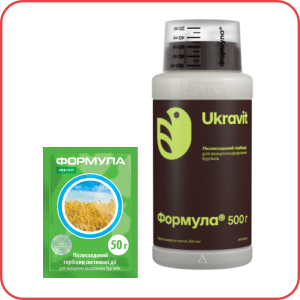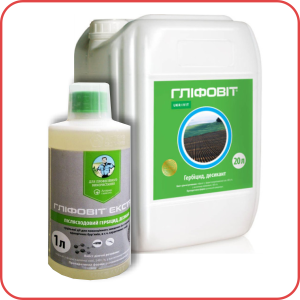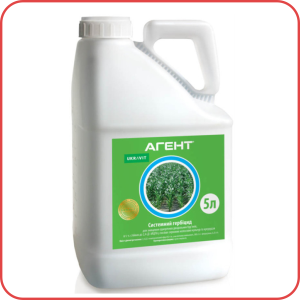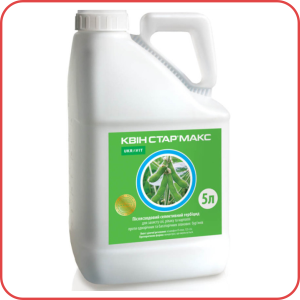Description
Compatible with other pesticides and agrochemicals on relevant crops. It is not recommended to mix with organophosphorus insecticides. Before preparing working mixtures, it is advisable to check the compatibility of the drugs (absence of sediment, foam, delamination, whipping into lumps, incomplete dissolution of one of the drugs, etc.). Combine only those components that match the recommended processing times, taking into account the phase of culture development.
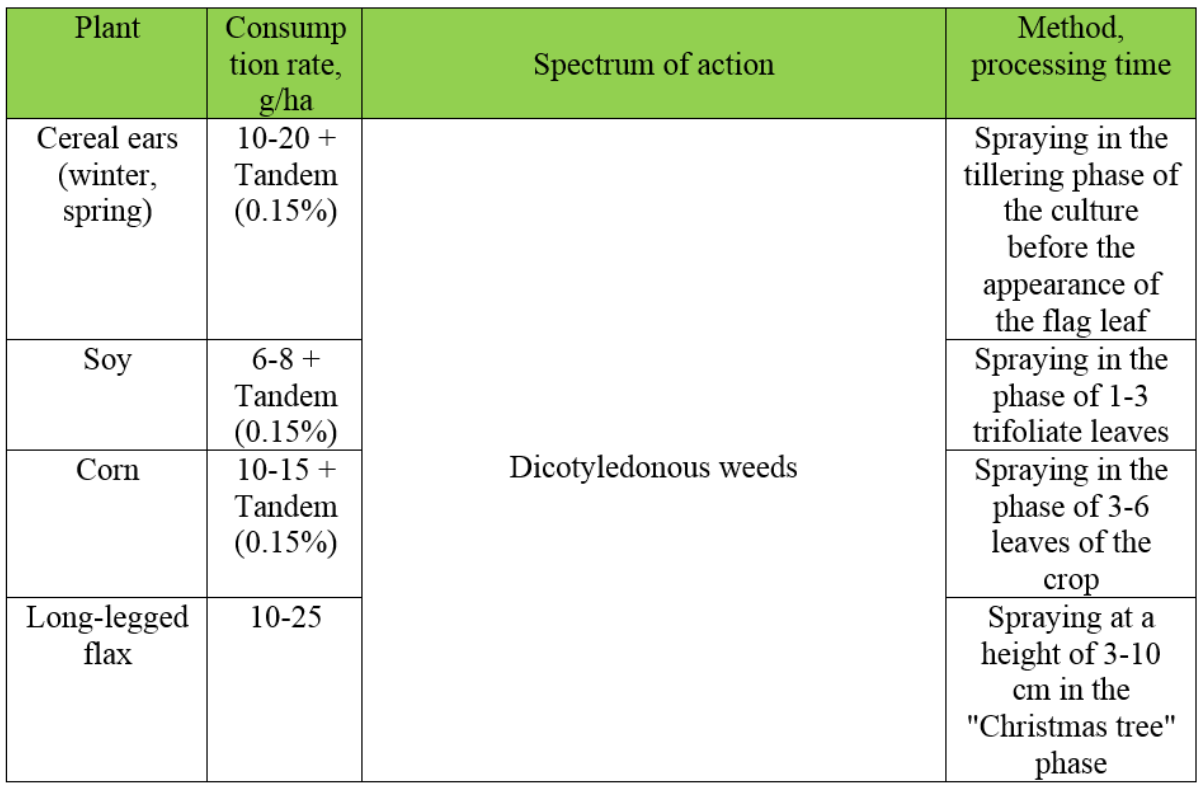
- Spectrum of action
Sensitive weeds: veronica (species), bitter gorse (species), field mustard, nettle (species), svezdozdok medium, Theophrastus’ rope, cypress, white cypress, wild poppy, gill (species), common sunflower (species), common sedge, nettle (species), shepherd’s bag, sorrel (species), dry rib officinalis, common spergel, field talaban, medicinal dandelion, grain horseradish, rapeseed rapeseed.
Medium-sensitive weeds: ragweed, yellow (field) thistle, common sedum, medicinal turnip, one-year thicket, wild poppy, common sedge, blue cornflower, tenacious morning glory.
Low-sensitive weeds: field bindweed, milk thistle (species), small-flowered branch, black nightshade. - The maximum number of applications per season is 1
- The waiting period from processing to cleaning is not established.
- The consumption rate of the working solution: 150-250 l/ha depending on the numerous composition of the weed component.
- Features of application
Be sure to add Tandem adhesive when spraying at the rate of 150 ml per 100 liters of water, regardless of whether the drug is used in a mixture or on its own. Spraying must be carried out in the phase of cotyledons – 4 leaves in weeds. Within 7 days before or after applying the drug, inter-row tillage is not carried out. It is not recommended to use the drug at temperatures below 10 and above 25 °C. In dry and hot weather, spraying should be done in the morning and evening hours. It is not recommended to make tank mixtures with drugs from the group of organophosphorus compounds. The interval between processing in such cases should be at least 10 days.
Advantages of the drug:
extremely selective in relation to cultivated plants;
control of a wide range of dicotyledonous weeds;
does not limit crop rotation in crop rotation;
destroys some perennial weeds that germinate from seeds;
optimal tank “partner” for other herbicides;
used in many crops.

